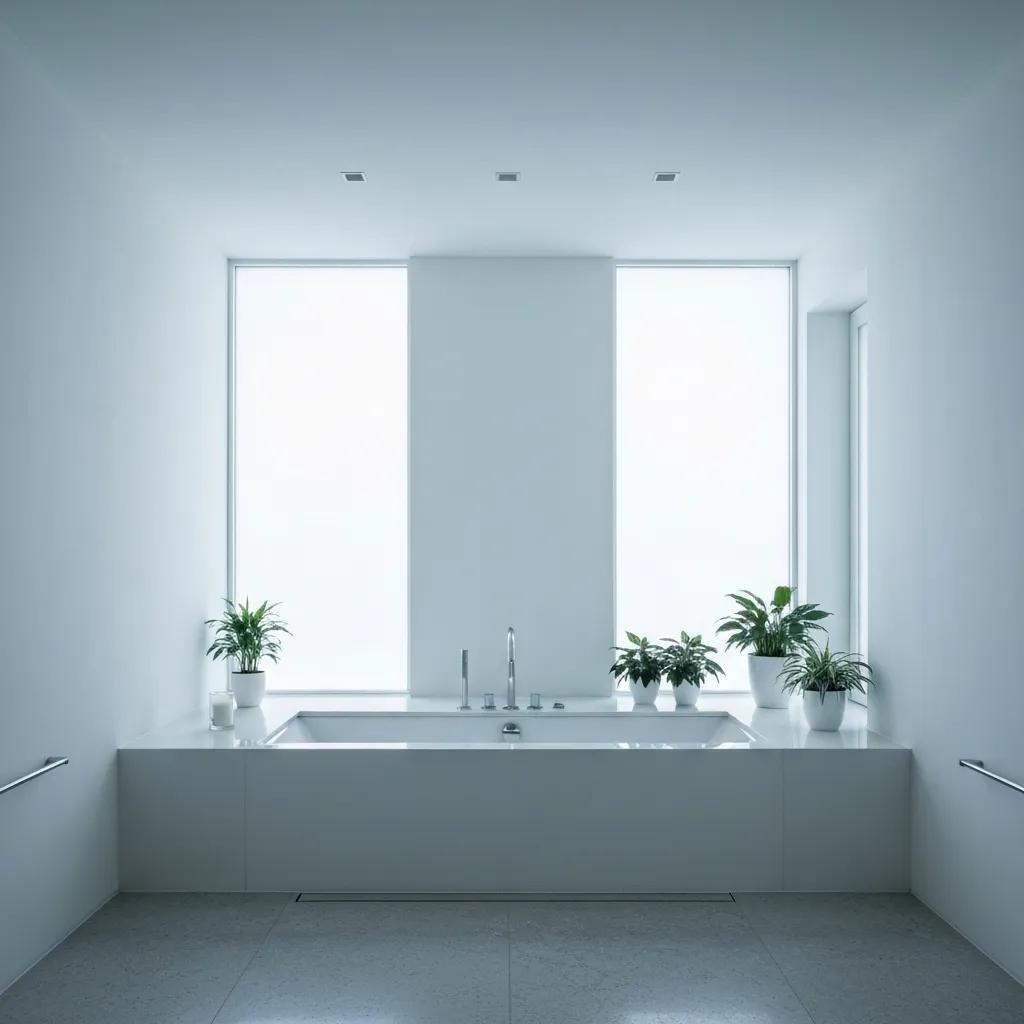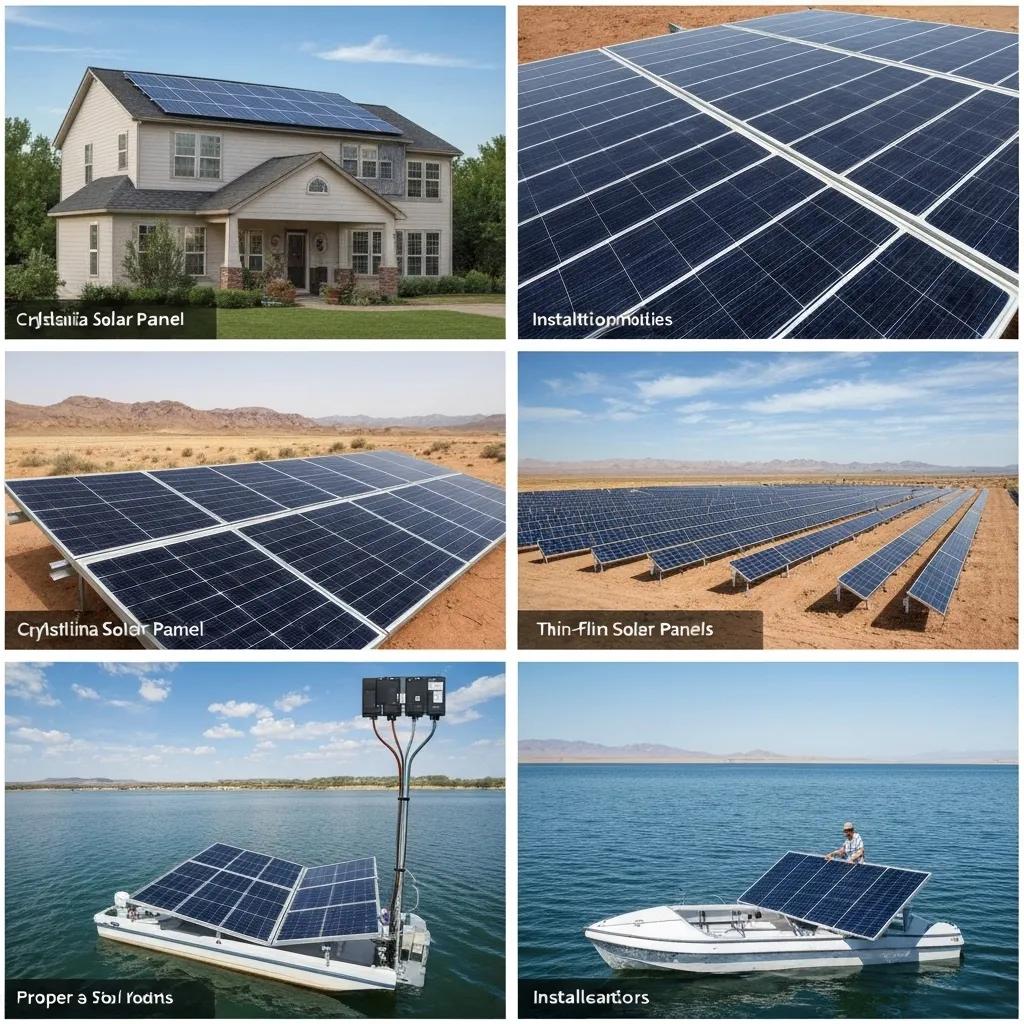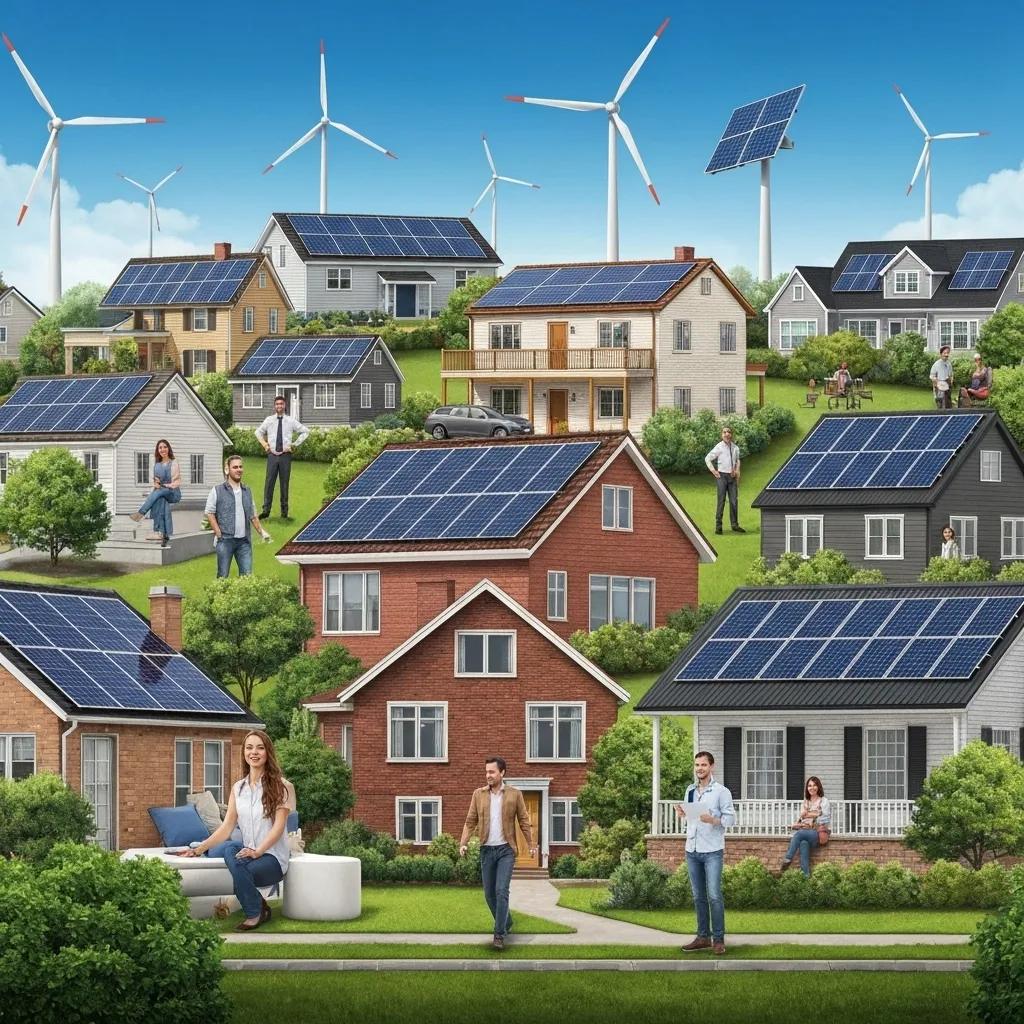
Solar Panel System Component Replacement: Costs, Services, and Upgrades in Las Vegas
Keeping your solar panel system running at its best means replacing older or damaged components. For Las Vegas homeowners, this often involves dealing with efficiency dips, inverter issues, or damage from our unique weather. This guide breaks down why components fail, what replacement costs to expect, the expert services Vegas Solar LLC offers, when it’s time for a change, how to keep your system in top shape, and the advantages of upgrading. We’ll also cover insurance and incentive programs to help you navigate the process.
Here’s what we’ll cover:
- Common reasons your solar panels and components might need replacing
- Understanding the costs, financing, and available incentives
- How Vegas Solar LLC handles your repair and replacement needs
- Making smart decisions about when and how to replace parts
- Essential maintenance to keep your system going strong
- The perks of upgrading to newer solar technology
- Answers to your most pressing questions about solar replacements
With insights from local experts and a deep understanding of Nevada’s solar landscape, this guide is your go-to resource for all things solar system repair and component replacement.
Why Do Solar Panels and Components Need Replacing?
Over time, solar panels and their components can degrade, get damaged, or simply wear out. This impacts how much energy your system produces and how reliably it operates. Knowing the common culprits helps you plan ahead and ensure your system continues to deliver savings and power for years to come.
What Makes Solar Panels Need Replacement?

Solar panels can degrade due to the materials they’re made from, manufacturing imperfections, or the harshness of the environment. Las Vegas’s extreme temperature swings can cause tiny cracks in the solar cells, while occasional hail or wind-blown debris can lead to visible damage like cracks or separation of layers. These issues reduce the panel’s power output and speed up its overall degradation.
Key types of damage include:
- Micro-cracks caused by temperature fluctuations, disrupting electrical flow
- Delamination where layers separate due to sun exposure
- Glass breakage from impacts like hail or flying debris
- Corrosion in solder joints from moisture getting inside
If your panels show any of these problems, they won’t produce as much power, and replacing them is necessary to get your system’s efficiency back up.
Jordan, D. C., et al., “Photovoltaic Degradation Rates—An Analytical Review,” Progress in Photovoltaics: Research and Applications (2016)
How Do Inverter and Battery Issues Affect Your Solar System?
Your solar inverter and batteries are crucial for turning the sun’s energy into usable electricity and storing it. If your inverter fails, it stops the flow of power. If your batteries degrade, they won’t hold as much charge for backup power. A faulty charge controller can also damage your batteries by overcharging them, reducing their lifespan and the system’s overall reliability.
Watch out for these signs:
- Your monitoring system shows no power being sent out
- The inverter frequently displays error messages
- Your batteries drain quickly and don’t hold a charge like they used to
- The inverter cabinet feels hotter than usual or makes strange noises
Addressing these component failures quickly will get your system producing power reliably again and protect your investment.
How Does Las Vegas Weather Impact Solar Panels?
The intense sun, dusty conditions, and occasional hailstorms in Las Vegas put a real strain on solar equipment. Constant exposure to UV rays can break down the protective materials over time, while dust can scratch the glass and block sunlight. Strong winds can even loosen the mounting hardware, causing panels to shift or become damaged.
Local weather factors to consider:
- UV damage to panel coatings, making them less clear
- Abrasion from dust storms that creates tiny scratches, reducing efficiency
- Hail impacts that can shatter the protective glass
- High winds that can loosen mounting bolts and frames
Understanding these local climate risks means you can schedule inspections and repairs proactively to keep your system performing at its best.
What’s the Cost of Replacing Solar Panels in Las Vegas?
The cost to replace solar panels depends on the size of the panels, how complex your system is, and local labor rates. In Las Vegas, replacing a single panel typically costs between $250 and $500. If you need to replace multiple panels or your entire system, the cost will be higher. We believe in transparent pricing so you can budget effectively and explore financing options.
What Affects the Cost of Solar Panel Repair and Replacement?
Several factors go into the total cost of fixing or replacing your solar system:
- The wattage and type of panel you choose, which affects the unit price
- How easy or difficult it is to access your roof and the safety measures needed
- The hourly rates for certified solar technicians in Nevada
- Fees for permits and inspections required by local regulations
- Any remaining warranty coverage or manufacturer rebates that can lower your costs
Barbose, G., et al., “Tracking the Sun: Pricing and Design Trends for Distributed Solar PV Systems in the United States,” Lawrence Berkeley National Laboratory (2024)
How Do Inverter and Battery Replacement Costs Compare?
The price and complexity of replacing different components can vary significantly:
Microinverters and optimizers boost performance at the panel level, while string inverters offer a more budget-friendly, centralized solution. Replacing a battery is a bigger investment, but it adds significant reliability and can help you save money during peak electricity rates.
Are There Financing Options and Tax Credits for Solar Repairs?
You can take advantage of several financial incentives to help lower the cost of replacements. The federal Residential Clean Energy Credit can cover a significant portion of eligible expenses. Additionally, Nevada offers state rebates and low-interest loans for energy-efficient upgrades, making it more affordable to keep your solar system in top condition.
Here are some common ways to finance your solar repairs:
- Federal tax credits that can significantly reduce your repair expenses
- Nevada energy rebates through state-specific renewable energy programs
- Solar loans with competitive interest rates and flexible repayment terms
- Manufacturer warranties that may cover equipment failures and associated labor
By combining these incentives with smart financing, comprehensive solar repairs and upgrades become much more accessible and affordable.
What Solar Panel Repair Services Does Vegas Solar LLC Offer?
With over 14 years of experience serving Las Vegas, Vegas Solar LLC offers expert solar panel repair and component replacement services. Whether it’s fixing hail damage or optimizing your system’s performance, our certified technicians provide dependable solutions to boost your system’s output and lifespan. You can find more details about our services on our Contact Us page.
How Do We Repair Broken Solar Panels?
Repairing a cracked or damaged solar panel involves a careful, step-by-step process to ensure safety and performance:
- A licensed technician will assess the damage to determine the best course of action.
- After safely shutting down the system, the damaged panel is removed.
- We’ll either refurbish the existing panel or replace it with a new one that meets original specifications.
- We conduct testing to confirm the new or repaired panel is producing power correctly.
- Finally, we recommission the system and calibrate monitoring.
This thorough approach ensures that every repaired or replaced panel works perfectly with your existing setup and meets original performance standards.
What Solutions Are Available for Solar Panel Leaks and Efficiency Loss?
Leaks from under your solar array can cause water damage and reduce panel efficiency. Vegas Solar LLC tackles these issues by:
- Applying specialized sealants and flashing to stop leaks
- Securing mounting hardware and replacing any worn flashing components
- Checking bypass diodes to identify and fix underperforming cells
- Performing professional cleanings and applying protective treatments to maximize light absorption
These services enhance your system’s resistance to the elements and can improve energy production by up to 15%.
How Does Critter Guard Installation Prevent Future Damage?
Pests like rodents and birds often make nests under solar panels, chewing on wires and compromising the system. Critter guards are sturdy mesh barriers installed around the edges of your panels and mounting rails. This protective fencing:
- Keeps small animals from getting underneath
- Allows for proper airflow to prevent overheating
- Protects wiring from damage and prevents short circuits
Installing critter guards is a proactive way to prevent costly repairs and ensure your system keeps producing power without interruption.
When and How Should You Replace Solar System Components?
Knowing when to replace components involves keeping an eye on your system’s performance and understanding the typical lifespan of different parts. Replacing components proactively helps maintain peak efficiency and prevents smaller issues from causing bigger problems down the line.
What Are the Signs Your Solar Inverter Needs Replacing?
You should consider replacing your inverter if it’s consistently showing errors or nearing the end of its operational life. Look out for:
- Repeated error messages and system shutdowns
- A noticeable drop in power output, even on sunny days
- Strange noises or excessive heat coming from the inverter
- The inverter is over 10 years old, which is its typical lifespan
Replacing an aging inverter promptly will restore your system’s ability to convert solar energy efficiently and ensure reliable power export to the grid.
How Long Do Solar Batteries and Charge Controllers Typically Last?
Replacing batteries when they reach the end of their lifespan ensures you have reliable backup power. Upgrading your charge controller can also provide access to advanced monitoring and safety features.
What Is the Process for Professional Solar Component Replacement?
Vegas Solar LLC follows a streamlined process for component replacement that prioritizes safety, efficiency, and compliance:
- We start with initial diagnostics, using system logs and advanced scanning tools.
- You’ll receive a detailed proposal outlining the replacement parts, costs, and schedule.
- We handle the scheduling and permitting with local authorities.
- Our certified technicians perform the on-site replacement, adhering to all electrical codes.
- We conduct thorough performance testing and a final inspection to ensure your system is operating perfectly.
This comprehensive approach gives you peace of mind and maximizes the return on your solar investment.
How Can Routine Maintenance Extend the Life of Your Solar Panel System?
Regular maintenance helps catch small issues before they become big problems, ensuring your system continues to perform well and protecting your investment.
What Does a Comprehensive Solar System Inspection Include?
A thorough inspection covers both the electrical and physical aspects of your system:
- A visual check of the panels for any cracks, discoloration, or debris buildup
- A review of the mounting hardware to ensure bolts are tight and seals are intact
- Electrical testing to check connections and ground fault detection
- A performance analysis comparing your system’s actual output to its expected output
Identifying early signs of wear and tear helps prevent efficiency loss and guides targeted maintenance efforts.
How Often Should Solar Panels Be Cleaned and Serviced?
To keep your panels clean and components working correctly, we recommend:
- Inspections twice a year in our desert climate to remove dust and pollen
- Checking performance quarterly through your online monitoring portal
- Professional cleanings annually using purified water and soft brushes
Consistent servicing can boost energy production by up to 20% and extend the life of your equipment.
How Does Preventative Maintenance Improve Solar System Efficiency?
Preventative maintenance involves replacing worn parts, tightening connections, and recalibrating monitoring systems before any failures occur. This strategy:
- Increases annual energy production by preventing performance degradation
- Lowers the cost of emergency repairs by catching issues early
- Extends the overall lifespan of your system by keeping components in good condition
Investing in preventative care leads to greater reliability and optimal savings over the long term.
What Are the Benefits of Upgrading Solar Components During Replacement?

When it’s time to replace components, upgrading to newer technology can significantly enhance your system’s efficiency, monitoring capabilities, and durability, leading to greater energy savings and more flexibility.
How Do Newer Solar Inverters and Batteries Improve System Performance?
Modern inverters come with advanced features like smart grid integration, higher energy conversion rates, and remote diagnostic tools. Newer batteries offer more energy storage in a smaller size and last longer. Together, these upgrades can:
- Improve overall system efficiency by up to 5%
- Enable advanced grid services, like managing power flow
- Provide reliable backup power with faster charging and discharging
Upgrading these core components can speed up your system’s payback period and ensure it remains cutting-edge for years to come.
What Are the Advantages of Microinverter and Power Optimizer Upgrades?
Microinverters and power optimizers are designed to maximize the performance of each individual solar panel, especially in situations with shading or varying levels of dirt. Key benefits include:
- Individual panel monitoring for precise troubleshooting
- Better energy production even when some panels are shaded
- Flexible system expansion, allowing you to add more panels later
These upgrades boost your annual energy output and simplify maintenance by allowing you to address issues on a panel-by-panel basis.
How Can Upgrades Maximize Energy Savings and ROI?
By incorporating high-efficiency panels, smart inverters, and advanced storage solutions when you replace components, you can:
- Increase your daily energy generation thanks to more efficient panels
- Reduce your reliance on the grid with smarter energy storage and usage
- Extend your system’s lifespan by using durable, warrantied products
- Achieve a faster return on your investment through combined savings and incentives
Making strategic upgrades delivers compounding benefits, ultimately leading to the best possible financial returns from your solar investment.
What Are the Frequently Asked Questions About Solar Panel and Component Replacement?
Many homeowners have questions about replacing individual panels, how long repairs take, what insurance covers, and how incentives apply when they need solar panel replacement or system repairs. We’re here to provide clear answers and help you plan your next steps.
Can a Single Solar Panel Be Replaced Without Replacing the Entire System?
Absolutely. Individual solar panels can be disconnected, removed, and replaced with an identical model. This targeted approach restores performance for that specific panel without affecting the rest of your array, saving you money on labor and minimizing downtime.
How Long Does Solar Inverter Replacement Take?
Swapping out a standard string inverter typically takes about two to four hours, including the time for shutdown, removal, installation, and testing. If you’re replacing multiple microinverters or upgrading to a more complex system, it might take up to a full day, depending on the size of your array and how accessible the roof is.
Does Home Insurance Cover Solar Panel Damage and Repairs?
Most homeowner insurance policies cover damage to rooftop solar panels caused by events like hail, wind, or fire. It’s a good idea to check your policy’s coverage limits and deductibles. Filing a claim promptly can help you cover the costs of repair or replacement.
How Do Federal and State Incentives Apply to Solar Repair and Replacement?
The federal Residential Clean Energy Credit currently allows you to deduct 26% of the cost of qualifying repair and replacement expenses. Additionally, Nevada offers utility rebate programs and state tax incentives that can further reduce your costs, making it more affordable to perform necessary upgrades.
Replacing faulty panels and components with high-quality equipment, professional service, and smart financing is the best way to maximize your energy savings and ensure your system lasts for years. For expert advice on tailored repair or replacement solutions, check out Vegas Solar LLC’s BBB accreditation and request a free consultation today: Vegas Solar LLC | Better Business Bureau® Profile.
By balancing regular maintenance, strategic upgrades, and timely component replacements, Las Vegas homeowners can boost their ROI, maintain environmental benefits, and ensure consistent solar energy production for decades. For full details on our services or to schedule a no-obligation assessment, visit the Contact Us – Vegas Solar LLC page.
